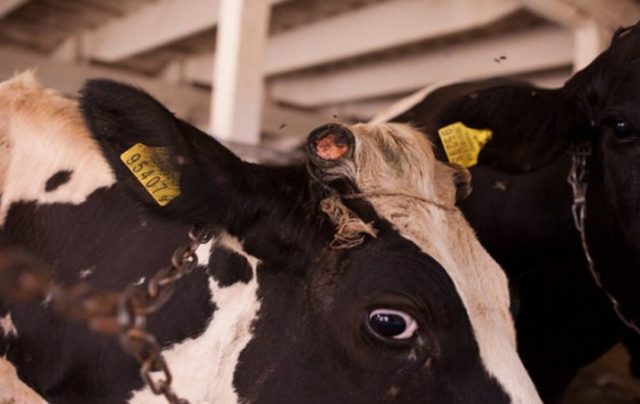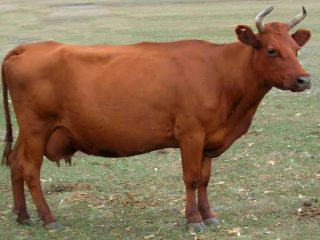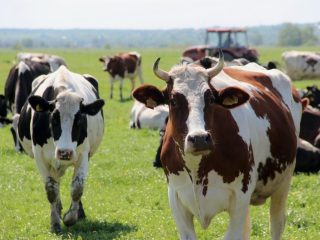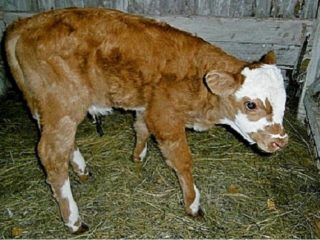Content
Cattle owners often find themselves in a situation where a cow breaks a horn. Such injuries can be prevented, but if it does happen, then you should immediately take the necessary measures to provide assistance to the animal.
Why are horn injuries in cattle dangerous?
Horns are a kind of skin derivative along with nails, claws and hair. Their formation comes from the transformation of the epidermis. It grows from the base, and after its final formation it does not change until the end of its life.
The section shows that the organ is represented by a keratinized upper layer, a kind of cover - the epidermis, as well as the dermis. Its main function is to connect to the frontal bone. In addition, blood capillaries and vessels, nerve endings, which feed the capsule and ensure its active growth, pass through it.
Under the dermis is connective tissue that is covered with mucous membranes. The horn is empty inside.
A cow's horn is usually divided into three main parts:
- top;
- body - middle part;
- the basis of the organ is the root.
The base is connected to the soft part - wax, which, in turn, connects it to the skin.
Blood vessels, capillaries, nerves are located in the lower two layers of the cow's horn, and the top is the keratinized epidermis. Thus, this part can be removed without causing pain or bleeding to the cow.
Often a broken horn in a cow leads to complications. Especially if the lower areas are affected. In this case, a bleeding wound appears on the head, and the base of the horn also bleeds. As a rule, if you do not provide assistance in time, then microorganisms that cause blood poisoning enter the wound. The local temperature is elevated, the cow is worried when touched. All this indicates the onset of the inflammatory process. After a while, suppuration of the wound surface begins. The cover becomes movable and can be removed.
Veterinarians classify injuries as mild, moderate, and severe in severity.
The injury is considered minor if the tip itself is broken, since there are no blood vessels there.
Small cracks are classified as medium. In this case, bleeding opens, but the prognosis is usually favorable.
A midline fracture is already a severe case. At the same time, the animal experiences severe pain. Pathogenic microorganisms penetrate into an open wound, which contributes to the development of inflammation in the frontal sinus, mouth and nasal cavity. The animal lowers its head and tilts it to the injured side. Sometimes the infection also spreads to the brain. This type is characterized by the mobility of the broken organ and unilateral nosebleeds. Blood enters the nasal passage through the frontal sinus.
The most severe type of injury is the detachment of the cover and scrapping at the base. This is very dangerous and painful for cattle.
What to do if a cow breaks a horn
Therapy for cracks is aimed at cleansing dirt, restoring the skin and epidermis.
First of all, if the horn is broken, you should:
- wash the wound with a syringe with a solution of manganese or hydrogen peroxide;
- grease with iodine or brilliant green;
- apply the most tight bandage with antibacterial ointment and change it every day;
- with a significant increase in temperature, antibiotic treatment should be prescribed.
With a closed fracture, if the cover is not damaged, a splint is installed on the broken horn. You should also place a very tight figure-eight bandage between the two horns. The cow should be kept in a separate room and walked away from the herd.
If the horn is broken in the middle part, therapy consists in stopping the bleeding, treating the wound with antiseptics, then resorting to surgery using anesthesia, since the broken horn is not restored.
Prevention of horn injury in cows
Prevention should be aimed at addressing the underlying causes of fractures. Cows should be kept in free stalls in accordance with zoo-hygiene standards. In the premises where cows are kept, equipment should not be stored, as well as anything that can provoke injury. The exercise of the herd should not take place near overgrown gardens, windbreaks. It is not recommended to use non-standard harness options. When transporting cows, it is necessary to correctly fix the cows with a special bridle.
However, the most reliable way to avoid injury is to dehorize (decornate) the entire livestock. The procedure is carried out at a young age, when the horns are not fully formed. There are several options for this:
- sawing off, in which only the top is removed;
- chemical removal is carried out when exposed to certain active substances;
- electrical removal, the essence of which is to cauterize the emerging horns.
The decornation method prevents future injury to the horns.
Conclusion
If a cow breaks a horn, the reasons can be varied. The owner is able to eliminate them and provide assistance to the animal. More and more experts come to the conclusion that a cow does not need horns at home. Their purpose is protection. So for domestic cows that are kept in a herd, they are a kind of atavism.











